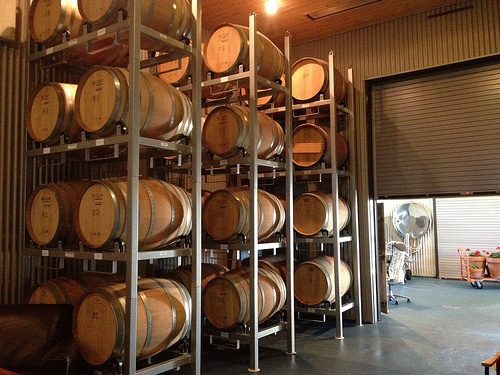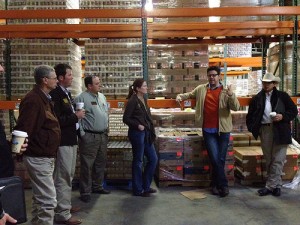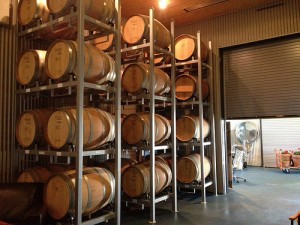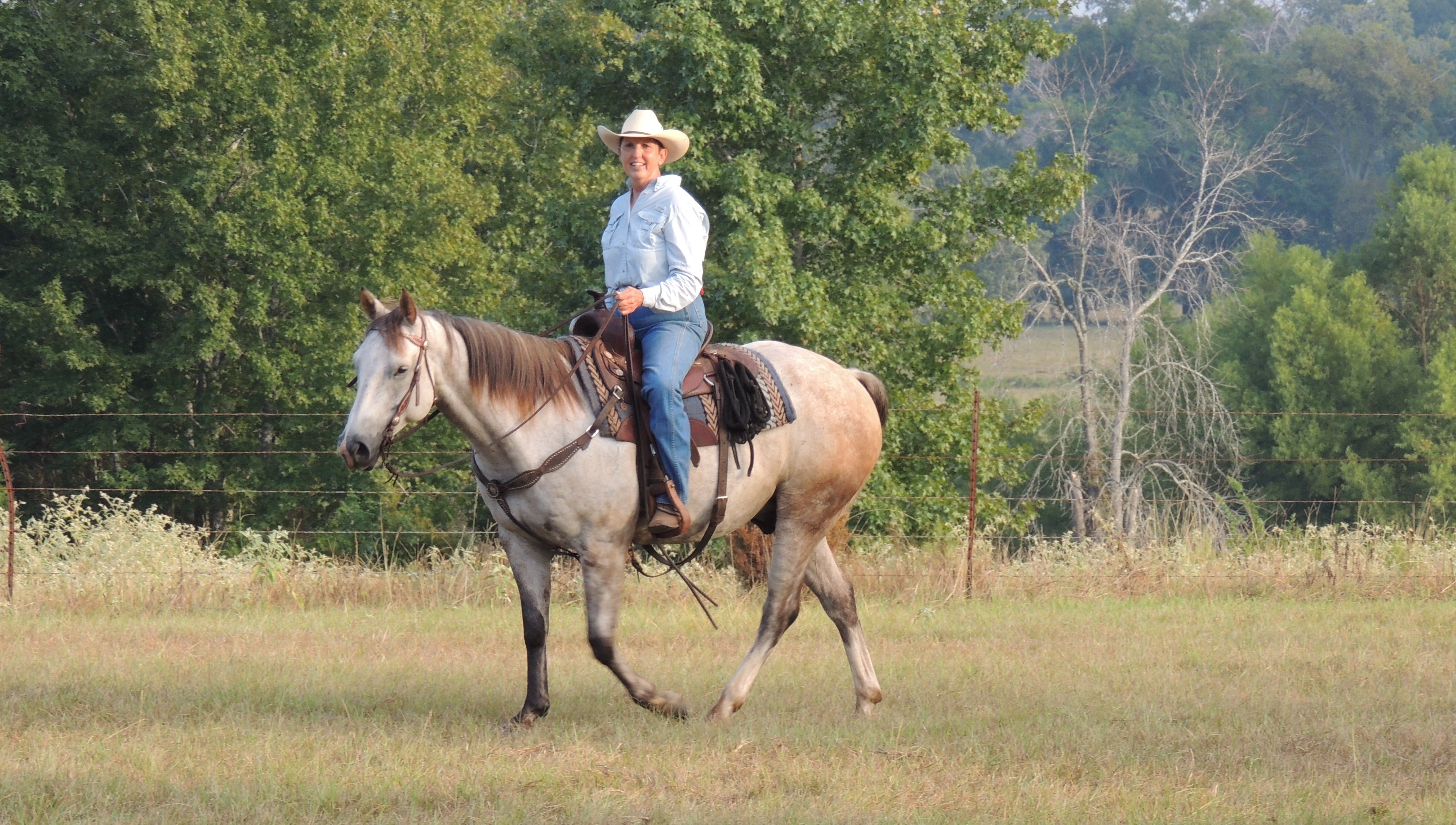The High Plains Food Bank is certainly a model for all other food banks. This is a non-profit organization that collects food and distributes food over 30,000 square miles of the Texas Panhandle. A staggering statistic – 1 out of every 6 is at risk of being hungry with 1 in every 4 children at risk. The highest risk are high school students who are ashamed to admit their hunger. The Food Bank has opened a Kids Café off campus trying to entice students to feel more at ease in getting a good meal. The food bank acquires food from individuals – corporations such as Wal-Mart and HEB – National companies such as Kellogg – civic groups – purchases from donations. This food bank would distribute 35,000 pounds of food today – 650,000 pounds for the month. They only receive 10% government assistance through FEMA – the remaining 90% thru individual donations. This food bank has its own organic garden that is paid for by a grant. They raise tomatoes, squash, okra, lettuce, bell peppers, asparagus and much more. The garden is for educational purposes and the food goes to the Kids Café. Their well runs on solar power – the collect rain water off the roof – and they have their own composting. Very impressive!!!
Now we have been seen technology advance everything from tractors that drive themselves – to our phones, notepads, and computers – solar and wind energy – and the list goes on and on. We have even accepted some of the genetic engineering of grains – especially for disease, weed, and heat tolerance. But when it comes to genetic engineering called “cloning” – we all have many unanswered questions and reservations. Dr. Gregg Veneklasen is passionate about the future of cloning and does not see it as producing “freaks” but advancing the genetic composition of our animals. He has cloned horses, calves, and other animal species.
He talked about how every cell can be programmed to repeat itself except those of a human. He has currently genetically cloned a bull calf – 86% angus & 14% Brahman – with an 18% rib eye – and 66% more efficient. He believes that this is one of the ways we will increase production with less land for beef production. Dr. Veneklasen is working on a feral hog project where boy pigs only make boy pigs. I say let’s release those NOW!!! He has engineered them with an orange nose so they can readily be identified. He is working on technology for no death loss – no sickness. The “curly calf” syndrome took 40 years to get here and they were able to eliminate the gene in two years. Education is critical. I certainly learned from this tour.
Our last stop took us to the Bar Z Winery for a panel discussion by several different field experts and a State Representative. Mr. Ken Horton talked about the pork industry located in the Panhandle. How they have advanced animal welfare – bio-security – and production with environmental balance.
Mr. Harold Grall spoke of the North Plains Groundwater Conservation District. His message was the same as so much that we have heard in the previous days but one point that was very different and so important – he did not believe that we would enforce conservation through regulation but conservation would be achieved through education. Programs don’t save water. People do!!
Representative Four Price spoke of the population growth expected in Texas from our current 25 million to 46 million – a staggering number to feed – and provide clean drinking water. He is an advocate for agriculture noting the 7.6 billion loss in the 2011 Texas economy due to drought related agricultural loss. One out of every 7 jobs in Texas are ag related. Make no mistake – the Texas economy has many ag components – all the more reason we need strong ag leaders and advocates willing to speak and educate.
Mr. Wayne Hughes spoke for the oil and gas production. Oil and gas also has huge economic impact responsible for 20 cents on every capital dollar in Texas. The industry has many job opportunities – on the ground – legal – accounting – much more. This is an industry that is also under fire for water use and environmental issues. But it is an industry that spends millions in compliance – trying to work in harmony with community and wildlife.
This was an amazing journey. I knew the Panhandle as farming and feedyards. I had no idea of the magnitude of these operations. Most important – I saw people trying to work together to achieve the right balance of farming/ranching – wildlife – land stewardship – and water conservation. Mr. Grall was right – programs or regulation don’t change our behavior – more laws don’t affect our heart – it is all about the people. I guess that brings back to our opening statement on the first day. We are all family!!!







Leave a Reply